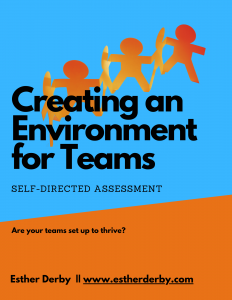Mark Levison has an interesting post in response to a Scrum Development discussion about “bad apples” on a team.
Before applying the label, look for reasons the person might not be performing. There are lots of reasons for a temporary dip in performance. Or, it might be a problem with the tools available, or the environment. It’s very common to attribute problems with the system to the individuals (and vice versa).
Our own prejudices can get in the way. My friend Jerry tells a story about when he was a grader for a college course. His job was to read essays and grade them based on criteria. When he turned the grades over to the professor, the professor challenged one of the grades, an A. “You can’t give this person and A,” he said, “he’s a C student.”
Mark offers a quote from Linda Rising:
“In many cases, a supervisor “determines” the ability of a worker in about three weeks, labelling them as either “can do” or “can’t do” workers. Once a prejudice has been formed, the supervisor views all the actions of that worker through this filter. If two workers make the same mistake, in the case of the “Can’t do” worker, the supervisor will think, “There he/she goes again, making the same mistakes,” while in the case of the “Can do” worker the supervisor will think, “Maybe he/she wasn’t feeling well.” Eventually, the supervisor can only recognize actions that affirm their prejudice.”
Mark advises:
So before we rush off to action on poor performers:
Stop, let go of preconceptions
Re-examine the person’s role on the team
Listen/Watch – don’t measure
Only if there is a problem – then solve it.
I agree.
Also see:
George Dinwiddie’s Working Hard or Hardly Working, and my response.


